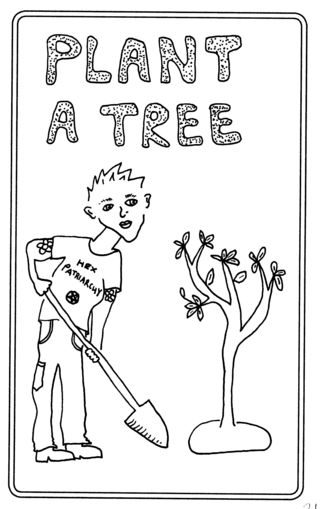Happiness
Joy in the Time of COVID
The top 13 happiness boosters for women and feminists right now.
Posted April 29, 2020 Reviewed by Kaja Perina

Nobody’s happy right now.
Either we’ve got a deadly disease or we’re freaked out we’re going to get a deadly disease; our income has tanked or we’re freaked out our income’s about to tank; or we’re finally facing the fact that we’re totally not going to Paris next month.
It’s a global grief sandwich.
Psychology teaches us that anxiety and a lack of control over a negative stimulus are the greatest predictors of depression—and we’re all facing unknowns we can’t control right now.
What better time to inquire about joy?
A little over a dozen years ago, I started a feminist psychology project—an “experiment in living” inspired by Joanna Field’s 1934 book, A Life of One’s Own. The crux of my project: Periodically, I ask women, femmes, and feminists of all genders what brings them joy.
My findings are out now in an updated edition from Microcosm Publishing: F*ck Happiness: How Women are Ditching the Cult of Positivity and Choosing Radical Joy.
As an update to that update, I decided to ask my team of experts—women and femmes and feminists of all genders who are experimenting with living—What's bringing you joy during lockdown?
The answers flowed in.
Interestingly, the things bringing us joy right now aren’t wildly different than the things that have always brought us joy: moments of openness outside institutionalized workplaces and school systems. What’s shifted and intensified is that these moments seem both more vivid and more important in these difficult times. And I think it’s important to note that the top 13 answers all have something in common: They are, as Moe Bowstern put it, all related to “a real pivot to de-center capitalism in my actual life.”
So here they are . . .
The Top 13 Joy Generators in the Time of COVID
1. Nature. Quiet moments appreciating the beauty of the natural world easily top the list, with more than 80 percent of respondents mentioning cherry blossoms or birdsong, sweeping views of their neighborhood, or the little chipmunk-like creatures building nests on the fence. Noemi Martinez, a single mom and poet isolating with her kids in South Texas, mentioned, “Sunshine and the smell of limes.” Mandy Trichell, a personal trainer isolating with her family in Houston, said, “Over the past several weeks, I have watched the magnolia tree go from having few leaves, to all the leaves, to the fuzzy little pods with the red seeds growing in, to the white petaled buds opening up and fully blooming into enormous magnolias covering the tree. I almost wish I had set up a time-lapse for it because that’s how I’ve gotten to view it.”
2. Music. Whether taking part in online singalongs, working on new compositions with friends, or listening to “Gate Crasher,” the new song by Alice Bag, the women who responded to my question talked about music almost as often as they talked about nature. Dot Hearn, isolating with her partner in Portland, Oregon, loved the community concert when, “Our neighbors had their quintet practice in front of their house, keeping themselves at proper social distancing requirements . . . it was very lovely.”
3. Writing and Drawing. “Creative work is my respite,” Elly Blue noted. “I’m excited to sit down every night after I’m done with my day job and spend two or three hours writing.” Fully 80 percent of the people I asked mentioned either writing or drawing as their lifeline. “Writing fiction has brought me joy, the way it does every day, but so especially in times of hardship,” said Santa Fe author Susan DeFreitas. “I can’t venture too far out or do too many things in the real world right now, but I can do whatever I want in fiction—I don’t even have to stay in this world at all.”
4. Pets. Cats and dogs and pot-bellied pigs always bring their people happiness, but being home with them feels like an extra treat. Jenny Hayes, who is isolating with her family in Seattle, mentioned finding joy in lockdown in particular because “the cat is happy we’re home.” And if the cat is happy, well, Cat Mama is happy, too.

5. Gardening. As luck would have it, the coronavirus hit North America just as springtime started to bloom, so many of us turned to victory gardens and seed exchanges to pass the time and feel joyfully self-sufficient. In a world where it feels like we have so little control, we can till a little soil if we have it, germinate a carrot, watch our lettuce grow. When I asked Rebeca Dunn-Krahn, isolating with her family in British Columbia, what brought her joy she said, simply, “weeding.” Nina Packebush, a grandmother in Washington state, said, “When I have my hands in the dirt my mind goes quiet and slows down into an almost meditative state, which is something that rarely happens for me, especially during these stressful times. More importantly, growing my own food reassures me that even in the most desperate of times, I will still be able to feed my babies and grandbabies.”
6. Porch Presents. China Martens, isolating alone in Baltimore, appreciates all the gifts she’s received during lockdown: homemade kimchi and cookies, beer and flowers, toilet paper, and a Moomins mask. She said, “three people gave me toilet paper when it was scarce! In the early days of this crisis when the stores ran out, it gave me warm fuzzies to receive a few rolls without asking.” More than 30 percent of respondents noted unexpected gifts or “mutual aid” on their joy lists.
7. Online Meet-Ups With Friends. Whether we love or hate the available platforms, more than 30 percent of the people I asked mentioned virtual meet-ups with their pals as their happy place. “I had a Zoom-drinks-with-friends which we wanted to call quaran-tea,” said Kassie Hughes, who is sheltering in place in Portland, “but we ended up all pouring alcoholic drinks instead of tea, and it was lovely to see and banter with everyone in the city who really matters to me all at once.”
8. Kids. Parenting, one of the experiences that has long confounded positive psychologists because it seems to induce both the highest highs and the lowest lows in the lives of people with kids, did make our list . . . though noticeably below pets. What’s making parents happy now are surprising connections. Meg Jeske, a Portland therapist mentioned, “my 13-year-old’s genuine desire to snuggle/be close to me and just hang out.” Another parent mentioned her adolescent son cleaning the kitchen without being asked. So, again, it’s the moments outside the standard institution of motherhood that stand out. “Cussing and letting the kids cuss,” made Camille Brightsmith’s list. My kind of joyful parenting.

9. Food Delivery. Thirty percent of the respondents to my survey mentioned yummy food delivery or pick-up. “Small wins feel like big wins under duress,” said Margaret McConnell, a Portland social worker. “High-end hummus with forest mushrooms delivered to my door? Why yes, thank you.”
10. Cooking. Second only to food delivery, the joy of cooking elaborate meals for ourselves and our families is making eating in isolation an act of joy. Michelle Cruz Gonzales, an Oakland, California professor now teaching from home, has even started an IG cooking show where she rolls out and cooks flour tortillas. She says, “I’d like to become the kind of IG influencer who influences people NOT to buy stuff, or in the very least to not buy stuff that we don’t need or can cook ourselves.”
11. Body Acceptance. I didn’t anticipate this sweet joy-booster mentioned so often, but whether it was Karla Brundage’s happiness in bralessness expressed as “No ancient patriarchal barriers to impose,” or Moe Bowstern’s observation that there’s joy in “learning to take care of my body because it feels good and I want to instead of because I’m trying to measure up to something I already failed at,” body-love is keeping our spirits up.
12. Dancing. Cutting a rug topped many joy lists, including Oregon teacher Sailor Holladay’s. Sailor’s been doing dance aerobics on Ryan Heffington's Instagram Live and said, “Questlove's DJ set has been lifesaving. Every night on the Roots YouTube page!”

13. Rage. I have to admit that this last joy-sparker surprised me, but too many mentioned it for me not to take notice. Bri Byram, a Minneapolis stylist isolating with her wife and two kids, mentioned a ritual she calls “church baths.” She takes these alone and demands that no one disturbs her. She locks the bathroom door, lights a candle, climbs into the hottest water-and-essential-oil combo she can tolerate, submerges her whole body—including her head—under the water, and screams! And then she screams some more. She said, “I’m finding myself curious because I didn’t intend on my church baths bringing me joy. I started church baths to help me notice, experience, and fully embody my rage. The ritual of raging has brought me joy. I’ve never been allowed to feel rage and joy at once. Have I? I wonder about this. How little girls/teenage girls/women are driven out of their bodies, denied a full spectrum of emotions and experiences, and rewarded for performing happiness. If I’ve been encouraged or rewarded to perform joy, have I ever felt joy for real? What do I do with my anger? How do I be angry? What is the relationship between joy and anger? When joy accompanies my rage, what does this mean?” Think about that.
Santa Fe poet Miriam Sagan mentioned another rage-joy connection. She said, “I've been very despondent. However, one fabulous moment of joy is as follows. We've been watching a lot of Italian opera, which I love. So, Tosca. There she is, with predator fascist Scarpia, chief of police. Who is getting ready to rape her. She sees the glint of a knife, next to the feast (from room service, no doubt). She picks it up and stabs him through the heart. Walks out the door, leaving his corpse on the floor. The best MeToo moment in all of opera.”




